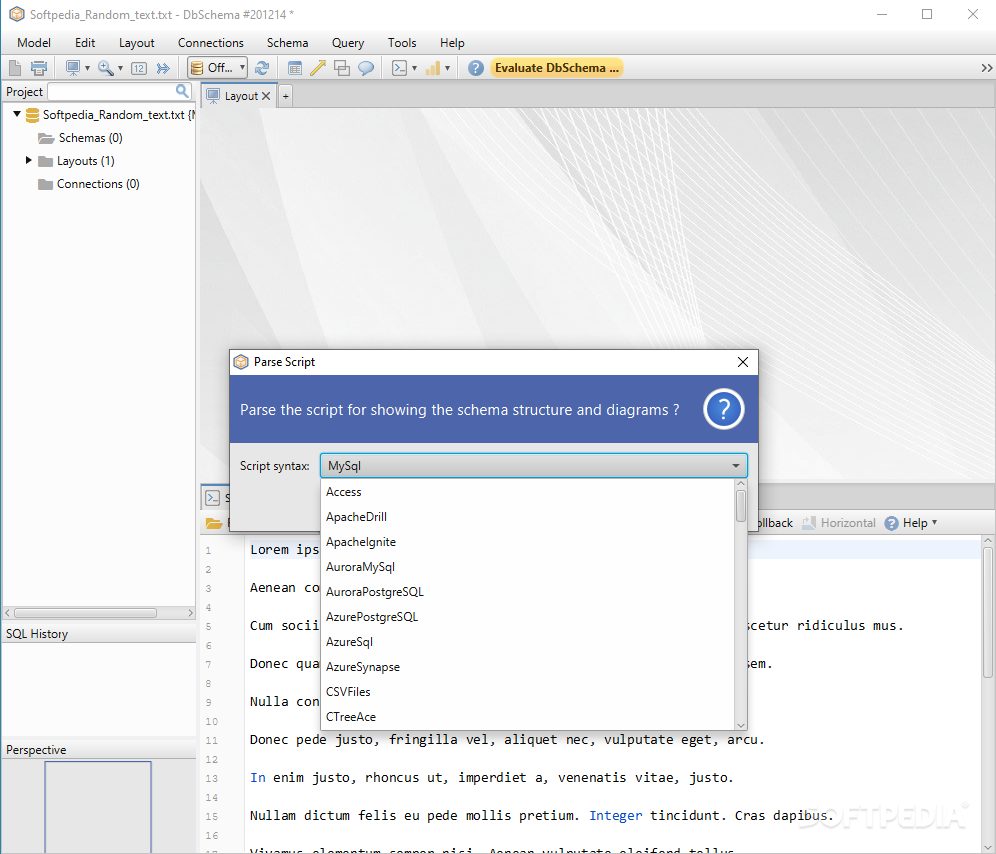

#DBSCHEMA VIEWER SOFTWARE#
Before creating the view, you can check if the query is valid by pressing Validate Query ģ.Slickplan is an easy-to-use diagram and flowchart software that lets you create professional diagrams, flowcharts, and organizational charts. In DbSchema, you can easily create views:ġ.Right-click on a layout and choose ‘Create View’ Ģ.Choose a name and fill the details for the view. To delete a row, the next statement is required: DELETE FROM view_nameįor example, we can delete from the employee_details, the employee with the name Tino: DELETE FROM employee_details To insert a row in a view, execute the next statement: INSERT INTO view_name SELECT employee_details.employee_id, employee_details.name, employee_details.address, salary.salary Let’s add the employee_id column to the employee_salary view: CREATE OR REPLACE VIEW employee_salary AS
#DBSCHEMA VIEWER UPDATE#
We can update a view by using the CREATE OR UPDATE syntax. We can use this query to add or delete fields from a certain view: CREATE OR REPLACE VIEW view_name AS


WHERE employee_details.name = salary.name Ī view must meet some conditions before it can be updated: SELECT employee_details_name, employee_details.address, salary.salary For this, I have to derive data from both employee_details table and salary table: CREATE VIEW employee_salary AS Now I will create a view that will include the employee name, address and salary. Now I will create a view in which I want to add only the name and address columns for the employees with an employee_id smaller than 4. Let’s consider that we have the next employee_details table in the database: employee_id The SQL syntax for creating a view from a single table goes like this: CREATE VIEW view_name AS The view can derive all the rows from a base table or just some of them, based on a certain condition.įor example, views can be useful when, due to security reasons, we want to make public only a part of the table’s data.

A view can have rows and columns, just like a real table in the database. SQL Views are virtual tables with data derived from one or more base tables.


 0 kommentar(er)
0 kommentar(er)
